UK made kit converts any tractor to RTK autosteer for £3k
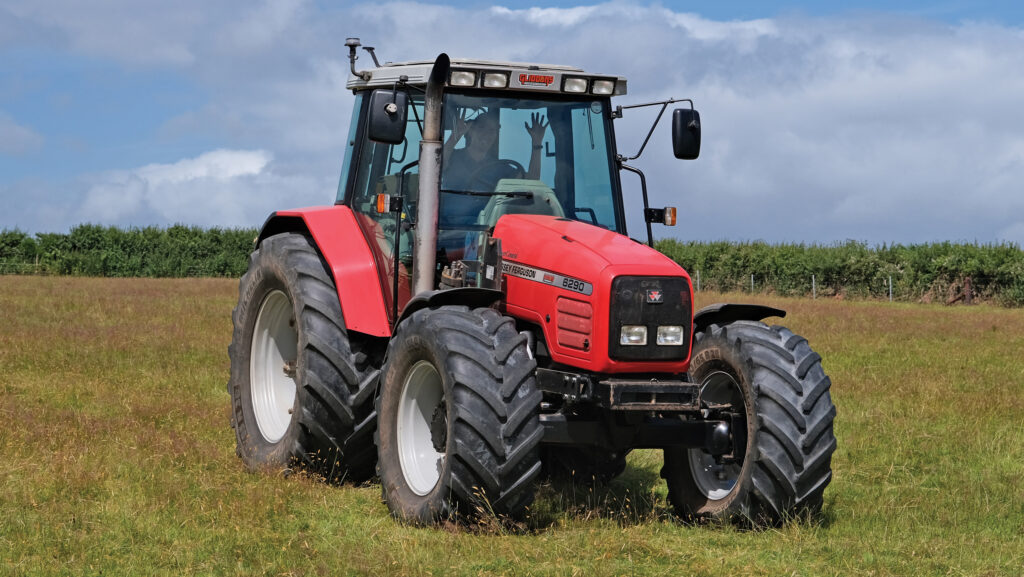 © James Andrews
© James Andrews Barrel-straight tramlines and perfectly matched bouts are now far more attainable thanks to the efforts of an enterprising West Country farmer.
Having perfected the design of his own low-cost autosteer system, Charles Quick, who farms with his father Andrew near Taunton, Somerset, has extended the privilege to other farmers.
His £2,950 Box 3 kit can be fitted to any vehicle with hydraulic steering – be it autosteer-ready or not – converting it to hands-free driving with a pass-to-pass accuracy of about 2cm.
See also: How to get cheaper or more accurate RTK guidance
No clunky steering wheel motor is required, even for older tractors. This is because his setup either plugs directly into the canbus system on steer-ready models or taps into the hydraulic steering lines on those without.
Almost everything required for the installation is included in the package, such as hydraulic valves, control box, antenna and a Windows tablet pre-loaded with autosteer software.
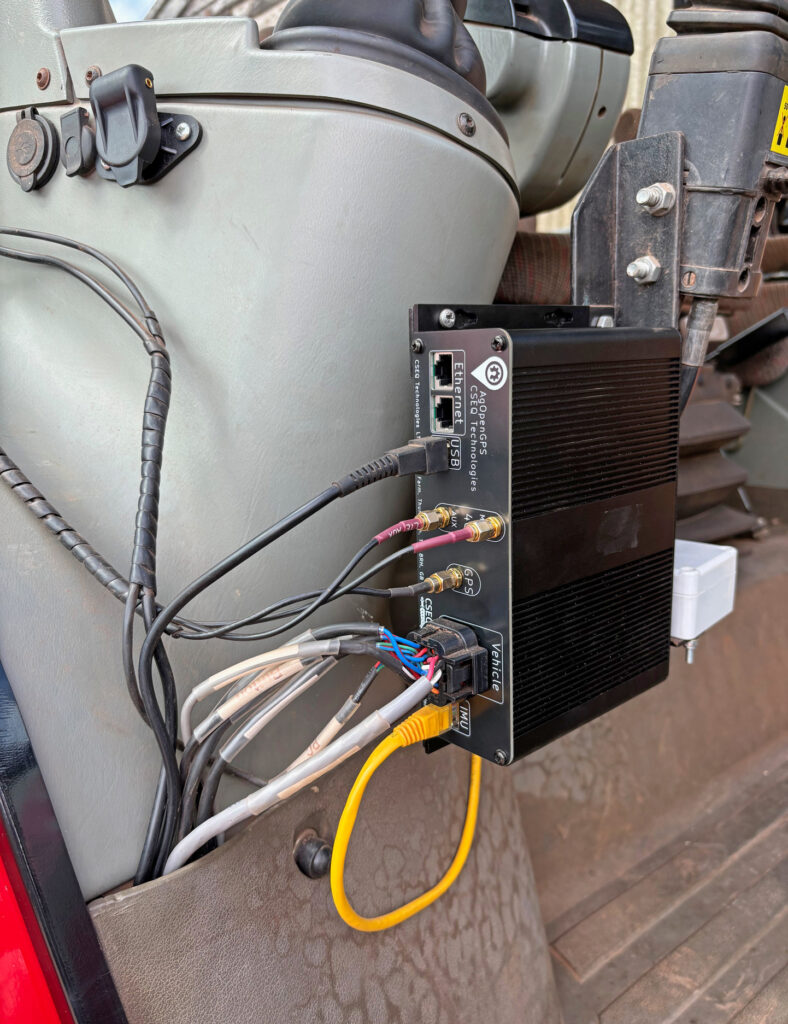
© James Andrews
Free software
The software in question is AgOpenGPS, which is produced and supported by a global network of tech-minded farmers.
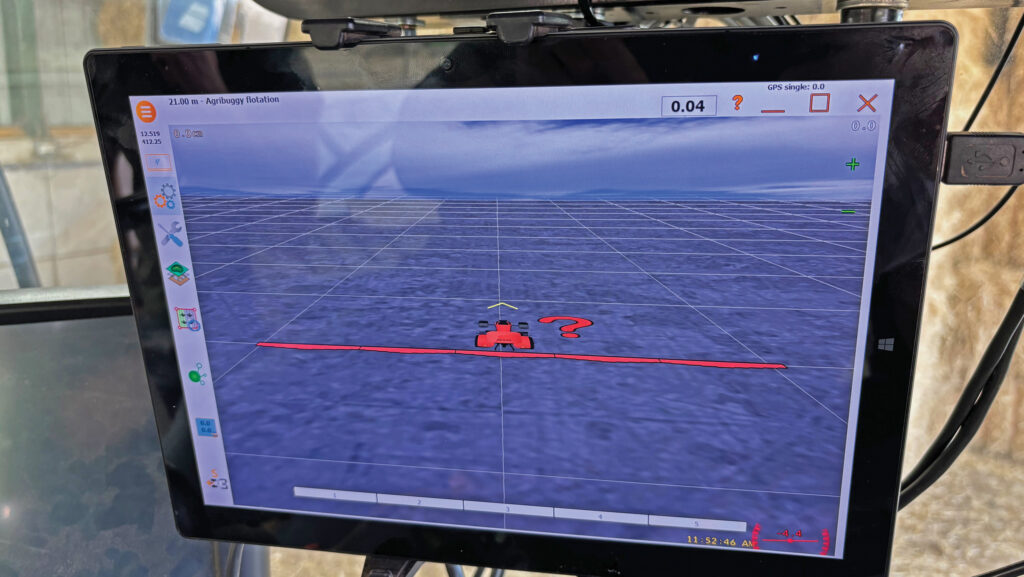
© James Andrews
Six generations in, this is robust, stable and has most of the features you’d expect on high-end systems from the likes of John Deere and Trimble.
Automatic headland turn, section control and variable rate are all on the billing, each of which is available without having to fork out for any costly unlock fees.
In fact, the whole system is free, with the altruistic community behind it seeking to help as many farmers as possible access the technology.
For individuals au fait with electronics and computer programming, it is possible to assemble a DIY autosteer system based around this software.
Plug-and-go
But what Charles has done is create a plug-and-go setup that almost anyone can install and use.
A little more work is required than simply asking a dealer to fit a system for you, though Charles says it is well within the capabilities of most farmers.
Autosteer-ready tractors are the simpler of the two, requiring the user to do little more than mount the control box and tilt sensor in the cab, position the GPS receiver on the roof and plug the wiring harness into the tractor’s canbus port.
Some calibration work will be necessary to tune the sensitivity of the system, but then it’ll be good to go.
Non-autosteer-ready tractors need a little more mechanical intervention, the most involved of which is plumbing in the electro-hydraulic steering and safety cut-out valves.
The job will vary slightly depending on the tractor, but on his Massey Ferguson 6290 Charles is feeding them from the loader slice on the rear hydraulic block with a free flow return into the backend.
He has then run two pipes to the front of the tractor which tee into the lines feeding the left and right steering rams.
The only other tasks are to fashion brackets for attaching the steering angle sensor to the axle and mounting a couple of buttons in the cab – one to engage the steering and one for shutting the system down in an emergency.
The rest of the process is largely the same as that for autosteer-ready tractors.
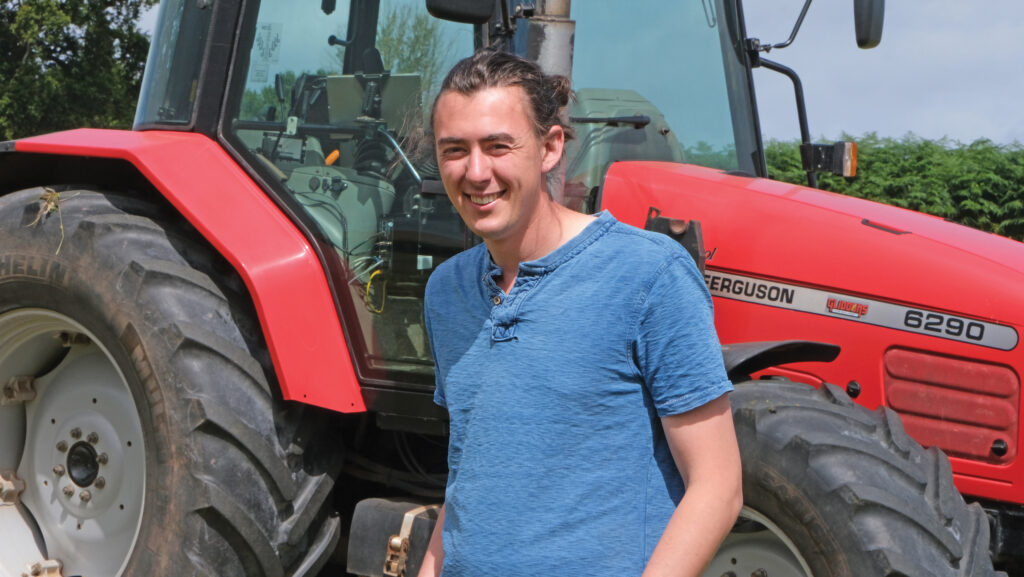
Charles Quick © James Andrews
RTK correction signal
Charles’s system, which he is selling through his business, CSEQ Technologies, can run in a basic fashion on free guidance satellites alone.
But to give the highest level of accuracy it requires an RTK correction signal.
This is the same Ntrip mobile system used by most major brands, which requires an annual subscription or the installation of your own base station.
A mobile data sim card is also needed to receive this signal – Charles’s control box has space for two – giving users in poor reception areas the best possible chance of connecting.
However, some may be able to save this cost by tethering the system to their mobile phone.
Typically, Ntrip RTK correction signals cost between £450 and £800 a year for each machine, but Charles is setting up his own network that will cost just £120.
He’s planning to grow this by offering a free base station to customers buying a Box 3 unit in any unserved areas, along with one free signal subscription.
In return, all they need to do is mount the box on the house or a farm building and supply it with power and an internet connection.
Alternatively, customers that plan on having multiple machines running guidance can buy their own base station outright.
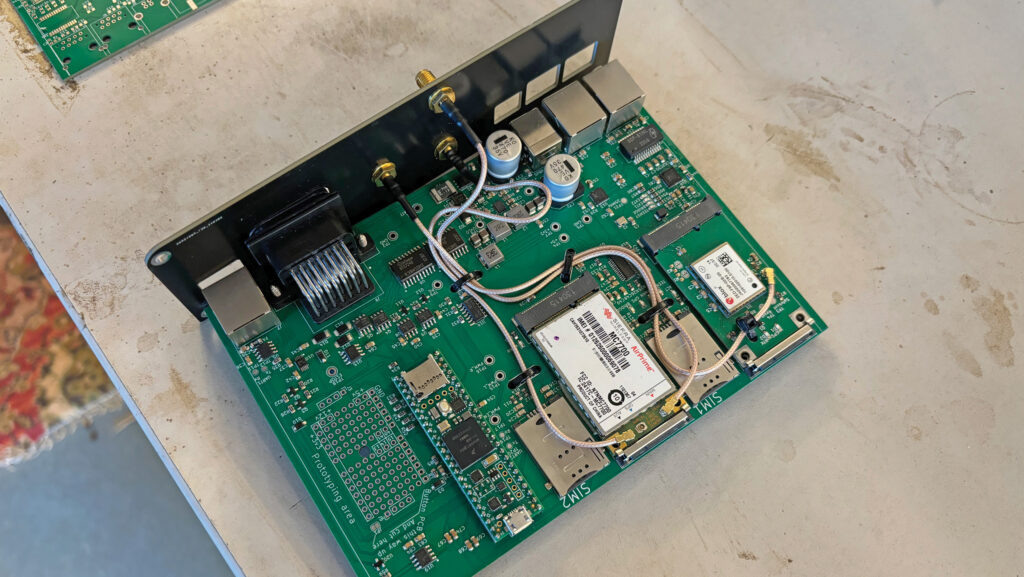
© James Andrews
Somerset designed and built
All hardware for the Box 3 system is developed and assembled by Charles, who has largely taught himself the dark arts of computer programming and circuit board designing.
However, he did have a solid introduction in the form of a one-year computer science course while studying for his crop science degree at Nottingham University.
His custom circuit boards are printed by a specialist firm before being delivered to his on-farm assembly workshop.
Once a solder-and-flux solution has been applied, a sophisticated “pick and place” machine grabs components and automatically installs them on the boards with incredible levels of precision.
Finally, the boards are baked in an oven to melt the solder and form all the complex connections. The circuitry is housed in tough aluminium boxes to protect it from the elements.
Buyers get two of these boxes to install in the cab: the larger unit houses a GPS receiver, 4G modem and a microcomputer, while the smaller one is home to the tilt sensor.
The reason for the separation is so that the tilt sensor can be mounted at a location of the customer’s choosing – generally on the cab floor – to improve accuracy when working on undulating ground.
Available in October
The Box 3 system will be available in October from the CSEQ Technologies website, but buyers can register their interest now to be at the top of the waiting list.
Also in the pipeline is a dedicated section control module.
As standard, the Box 3 system comes with four 12V section outputs – allowing four implement sections to be switched automatically – but the dedicated unit will increase this to 16.
There will also be the option of “daisy-chaining” multiple units together to give as many sections as a user requires. Plus, it will also include two rate controllers and will be variable rate compatible.
Retrofitting two Box 3 systems – Ian Graham, Manor Farm, Stawell, Somerset
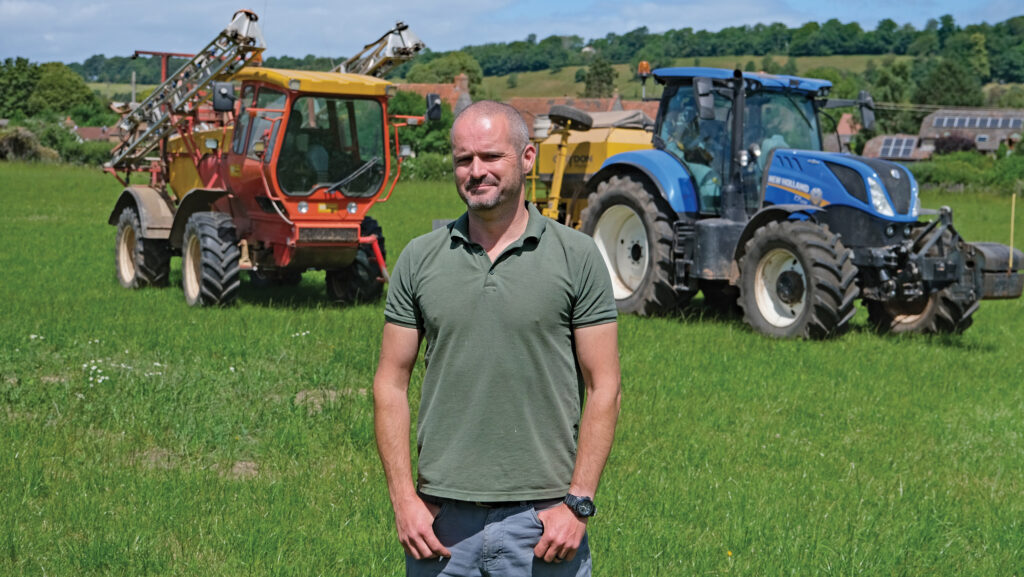
Ian Graham © James Andrews
When upgrading his frontline tractor to a New Holland T7.225, Ian Graham swerved the factory fit GPS system and opted for a prototype Box 3 unit from CSEQ Technologies instead.
Cost was one factor, but he was also impressed by the features that owner Charles Quick had built into the system.
“The dealer offered me £3,000 for the GPS kit on my old tractor, which wouldn’t have gone much towards a current setup from New Hollan but paid for everything I needed from Charles.”
Installing the kit was simple enough too, as the tractor came autosteer ready.
All he had to do was plug in the components, buy a holder for the Windows tablet running the software, and make a simple bracket for the main control unit.
The most time-consuming process was calibrating the system and setting the steering sensitivity, but he says he’d be far quicker if he had to do it again.
To save on costs, the internet connection for his RTK correction signal comes from tethering his phone rather than paying for a separate sim card, which has worked well.
Drilling has been the main task completed so far, with the system guiding his 3m Claydon Hybrid across the farm’s 135ha arable area.
“It worked perfectly and I didn’t get any problems under trees like I did with the old satellite-only system,” he says.
On the back of this success, he purchased a second kit to install on his Kellands Agribuggy 2000.
As this wasn’t steer ready, he had to pipe the included hydraulic valve into the steering circuit and mount a couple of buttons in the cab, which he ended up putting in their own box.
“There was quite a bit more work to get it installed, but the calibration was actually simpler than it was on the tractor.”
When it’s available, he’s considering adding Charles’s bolt-on section control kit so that he can upgrade from manual to automatic boom switching.

